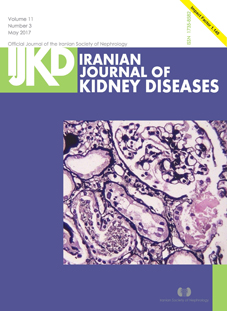Effects of Erythropoiesis-stimulating Agents on Intestinal Flora in Peritoneal Fibrosis
Abstract
Introduction. This study aimed to investigate the effects of erythropoiesis-stimulating agents (ESAs) on intestinal flora in peritoneal fibrosis.
Methods and Methods. Twenty-four Wistar albino rats were divided into 3 groups as the control group, which received 0.9% saline (3 mL/d) intraperitoneally; the chlorhexidine gluconate (CH) group, which received 3 mL/d injections of 0.1% CH intraperitoneally, and the ESA group, which received 3 mL/d injections of 0.1% CH intraperitoneally and epoetin beta (3 doses of 20 IU/kg/wk) subcutaneously. On the 21st day, the rats were sacrificed and the visceral peritoneum samples were obtained from left liver bowel. Blood samples were obtained from abdominal aorta and intestinal flora samples were obtained from transverse colon.
Results. Histopathologically, the CH, ESA, and control groups had peritoneal thickness of 135.4 ± 22.2 µm, 48.6 ± 12.8 µm, and 6.0 ± 2.3 µm, respectively. Escherichia coli was the predominant bacterium in the intestinal flora in the control group. Significant changes in microbial composition of intestinal flora towards Proteus species and Enterobacter species was seen among the groups (P < .001). There was no significant difference between the ESA and CH groups regarding the isolates from blood cultures. However, the bacterial isolates from cultures of intestinal flora among these groups were significantly different (P < .05).
Conclusions. Erythropoiesis-stimulating agents change intestinal flora by a clinically significant amount in experimental peritoneal fibrosis. We consider that ESAs achieve this via regulating intestinal peristaltism.


